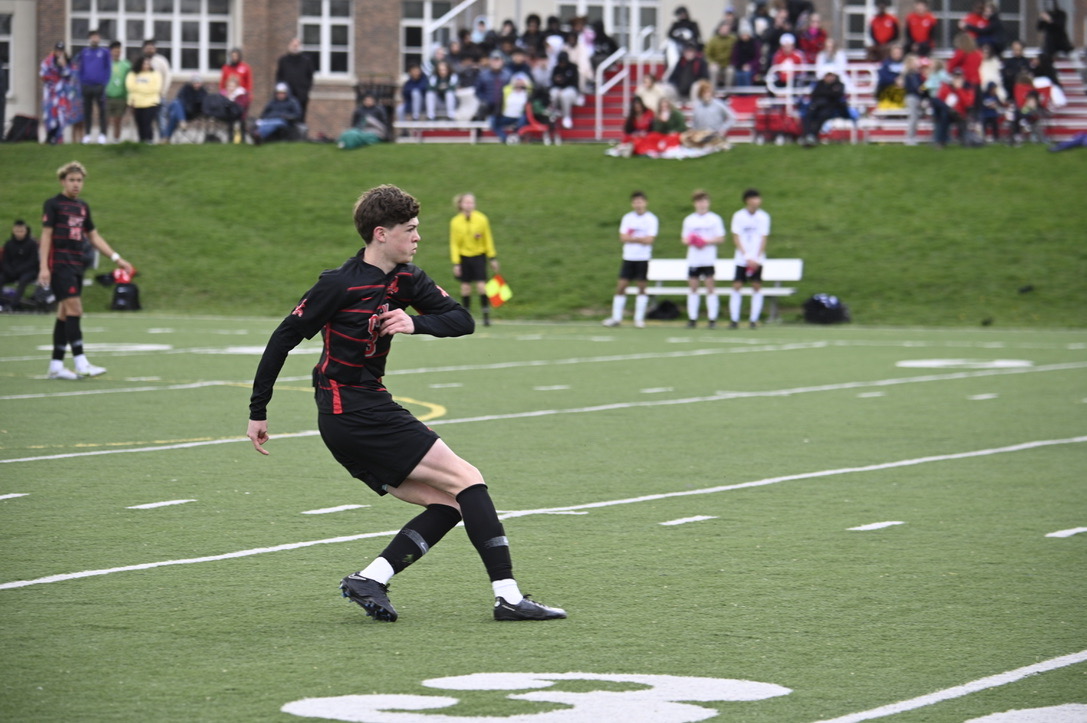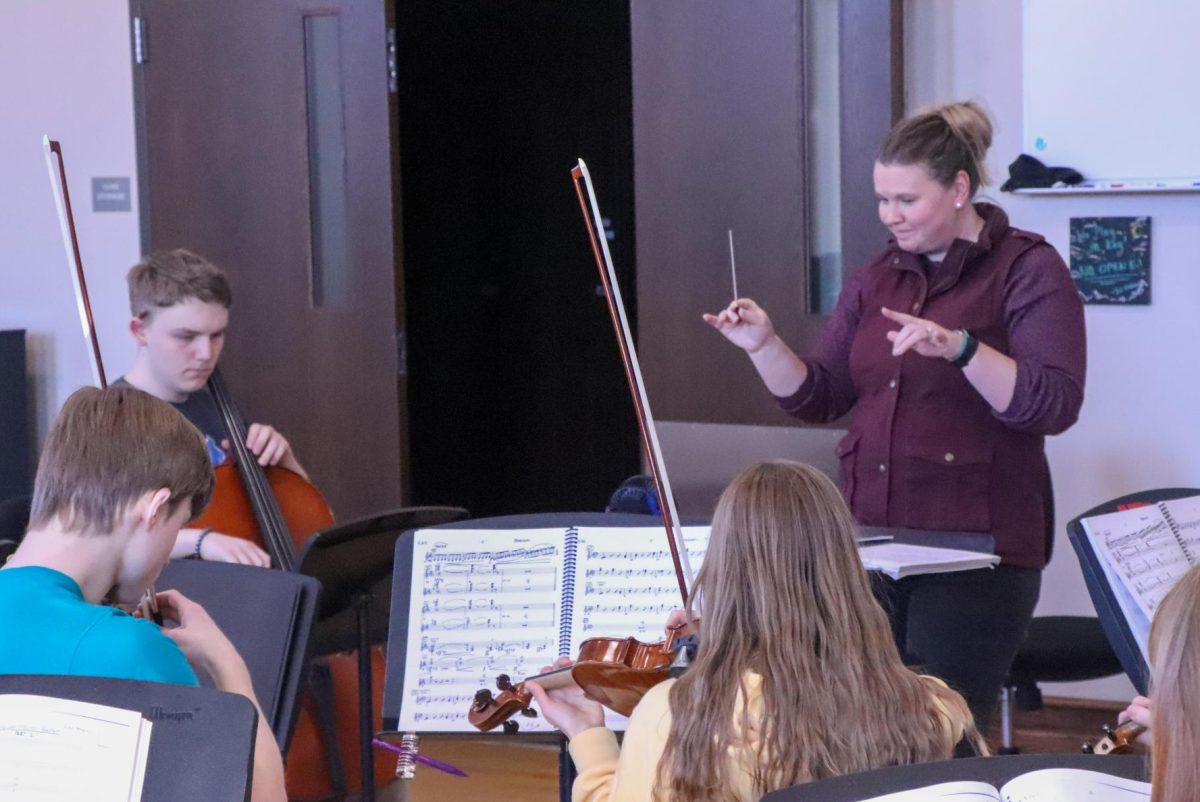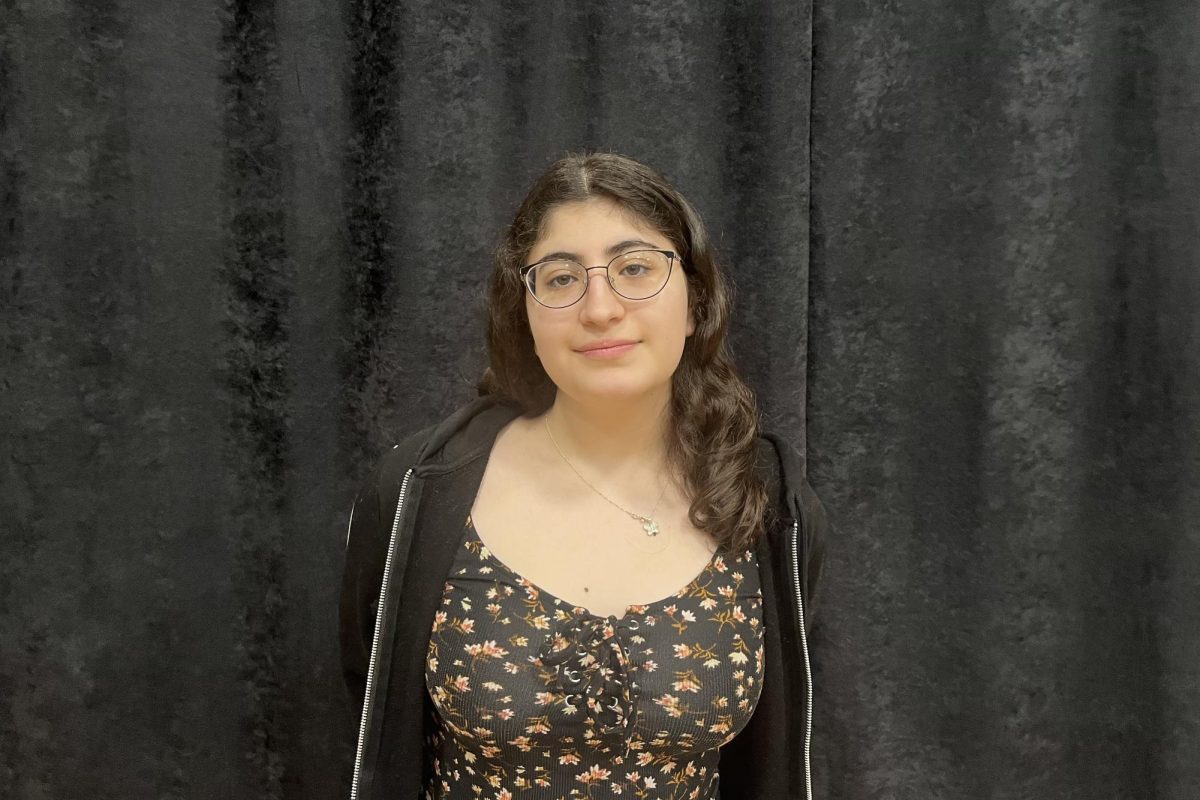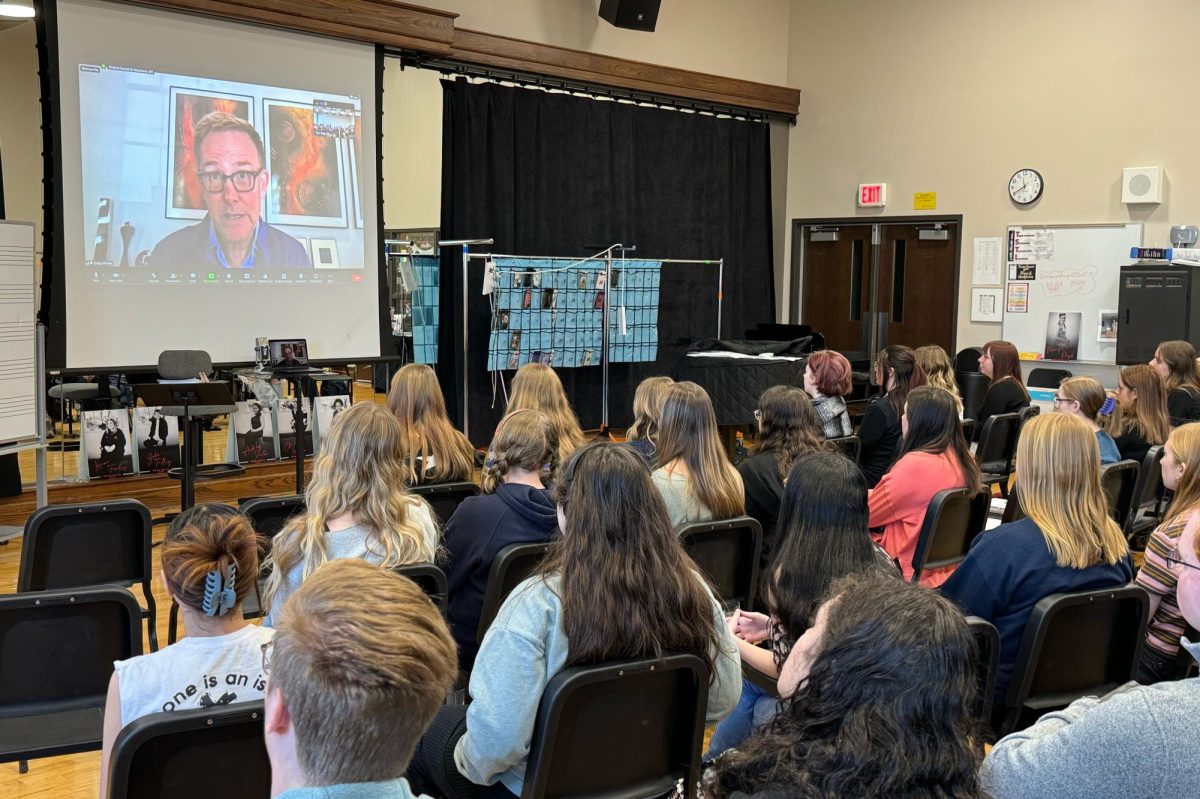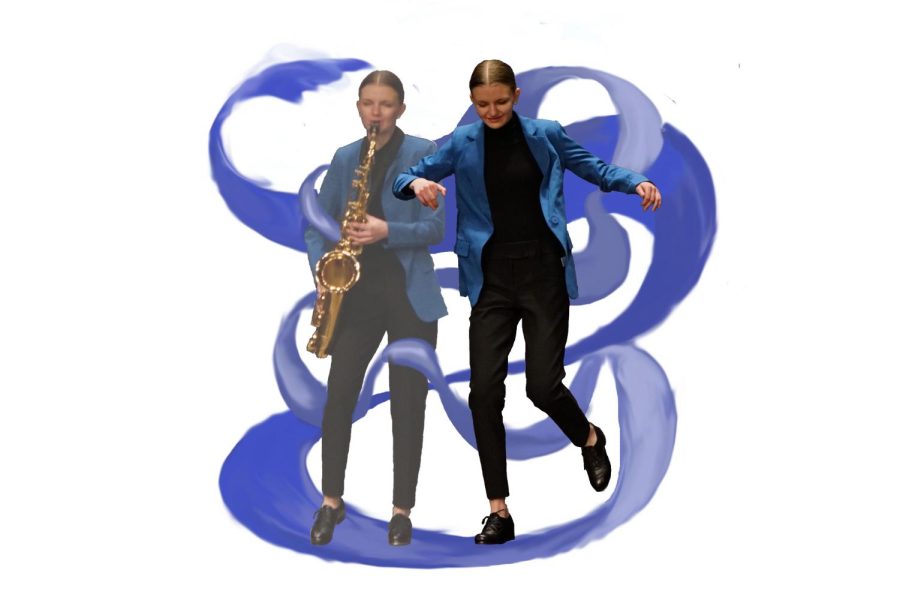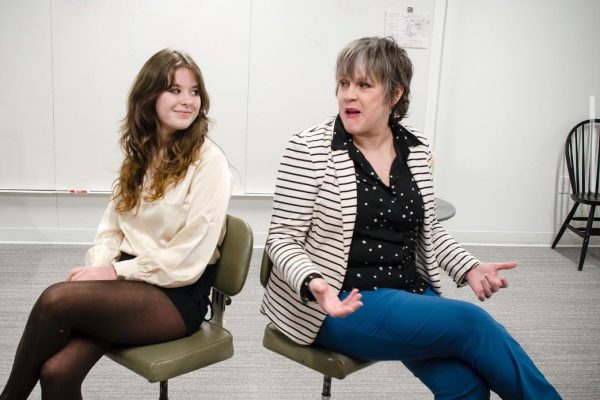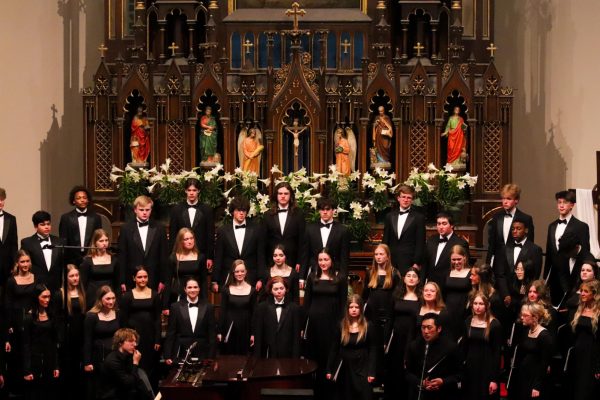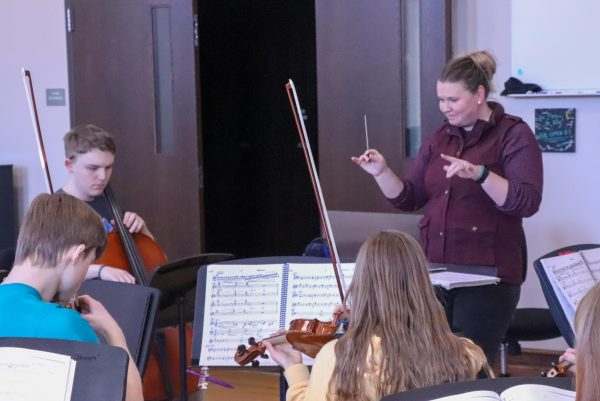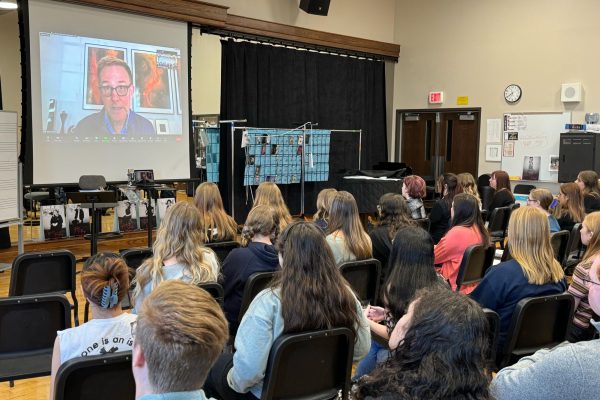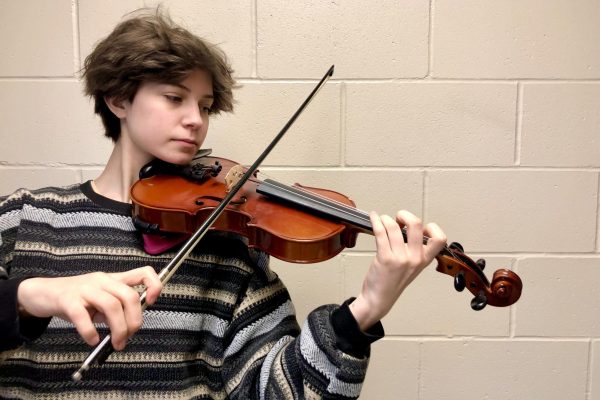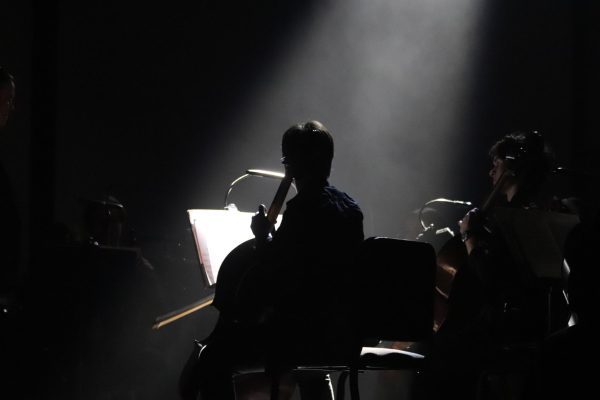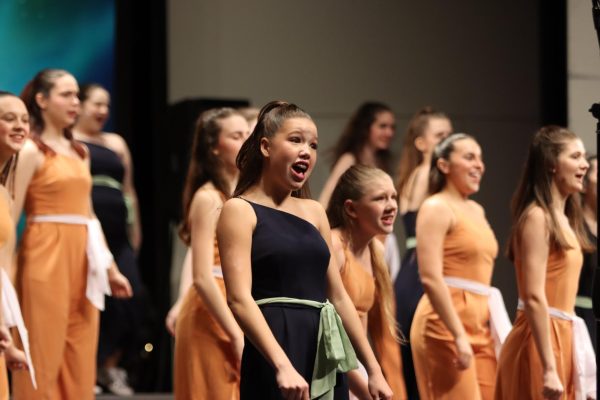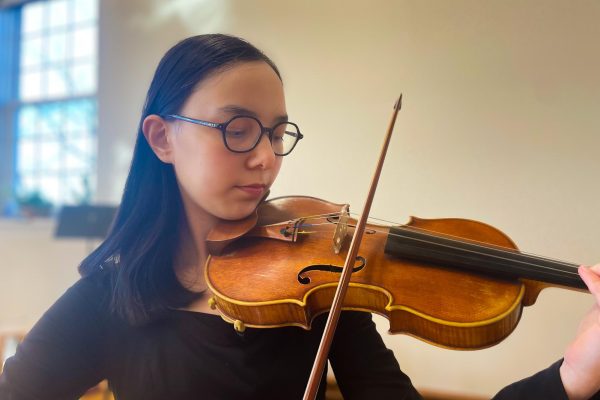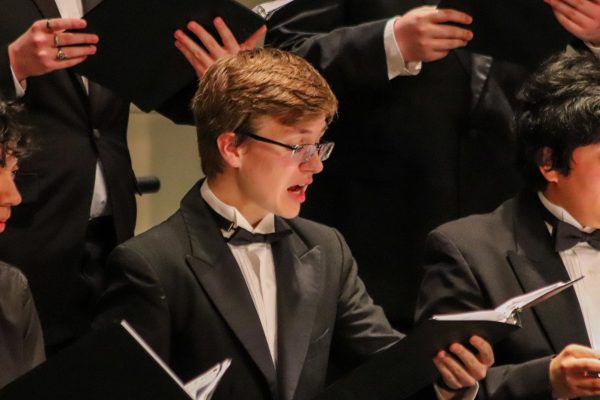Molly Riepe: Multidisciplinary Artist
Riepe tap dances and plays saxophone at a dance competition
February 9, 2023
During Jazz Ensemble’s performance at the annual Winter Show, one student in particular shocked the audience with a hidden talent. After setting down her saxophone, Molly Riepe ’23 stood center stage and began to tap dance. One rhythmic line followed by the next, Molly’s tap solo became more exciting as the song progressed. Minutes later, students in the front row shot up from their seats, cheering and clapping in amazement. Riepe then picked up her saxophone and continued the show.
“The Winter Show is so amazing for me because it was just the most full circle thing that could have ever happened,” Riepe said.
The Winter Show wasn’t the first time she had the opportunity to combine instrumental music and dance. During her final year as a competitive tap dancer, Molly played a saxophone solo as her team danced behind her to the music.
“I just thought it was really cool how I was able to bring instrumental music to something I love, to dancing. And then I got to bring dancing to something I love, which is instrumental music, it was just crazy,” Riepe said after her performance at the Winter Show.
Riepe plays in the top concert and jazz ensembles at City, but her love for the arts didn’t start in band. In fact, a family friend’s dance recital was what first inspired her to begin dance classes at 3 years old. After exploring various styles of dance over the years, she found that tap fit her skills and personality best. Unlike other dance styles, tap allows her to focus more on the music she’s making rather than having to focus on the way she looks through cosmetics, dress, more maintaining high flexibility.
“You just get to exist and do what you want to do. So that’s kind of where it all started, and then it just took off from there,” Riepe explained.
Although dance became a passion of hers at a young age, her relationship with dance hasn’t always been a smooth ride. Riepe battled with practice and performance anxiety early on. Over time, she found that the key to finding confidence and comfortability on stage is more exposure and a change of mindset.
“You just have to do it a lot,” Riepe said. “It doesn’t bother me anymore because I’m so used to being in that performer position. My advice is to do things in front of people as much as you can to get used to that environment.”
“When you’re going on stage, people are there to watch you. They’re not there for anything else,” Riepe said.
She encourages performers not to shy away from having an unapologetically confident and self-assured mindset, excepting the fact that it’s their performance. She believes that once performers are able to get over a self-judgemental or self-critical mindset, they’re able to focus on making the performance more interesting and more fun.
Reflecting back on her time in the City High Music Department, Riepe expressed just how valuable her experience as a multidisciplinary artist has been.
“It provides you with a different perspective that’s extremely valuable to whichever art form you’re doing,” Riepe explained. “[Being a multidisciplinary artist] just helps you to have a better appreciation for everything that everybody else is doing”
Riepe directly attributes her musical successes, such as her acceptance to the prestigious All-State Honor Band, to her experiences as a tap dancer. She never had an elaborate dream of becoming a flute player. However, because of the unique lessons she’d learned through tap dance, her musical skills flourished.
“I feel really really lucky,” Riepe said. “Tap has totally paved the way for me, in ways that I haven’t even realized. I seriously don’t think I would be in the same spot if it wasn’t for tap. Tap has helped me to become the musician I am.”
Tap dance has even allowed her to enjoy instrumental music more, providing her with a unique understanding and appreciation for rhythm.
“Tap is so directly related to music because that’s what you’re doing, you’re creating sound,” she said. “The reason that rhythm comes easily to me and the reason I’m able to understand rhythm quickly is because that’s all tap is. It’s learning how to count things, how to feel things.”
Riepe loves to perform both instrumental music and dance because of the impact performing arts has on the audience and spectators, whether or not they’re artists themselves. She loves to inspire a fun and engaging environment, and hearing such positive feedback makes her job that much more fulfilling.
“It’s so fun to watch,” Riepe said. “The feedback I got from both performances was crazy. Even more people loved it because it was just something new and different”
Riepe described how interdisciplinary art is especially unique and creative. Because of this, it helps to broaden our understanding of what’s possible within the performing arts, inspiring future artists and generations. In turn, it increases public interest and support for the arts as a whole.
“You can collaborate with other people and create new things that people haven’t seen before. That’s what’s fun about performing, you’re there to entertain people,” Riepe said. “And when you do new things that are fun and exciting, people are going to want to keep coming to events and keep supporting the arts.”
Riepe hopes to encourage experimentation in other areas of interest and encourages people not to shy away from combining their skills and collaborating with peers to create something special.
“Tap has such a deep history,” Riepe explained, “It’s an American art form and it started as, just like dances that people would do together, and then it transformed into kind of what we know today.”
If interested in tap dance, Riepe recommends learning more about it and intentionally looking further than the tap dancers we often see in popular media.
“A lot of people think of Broadway tap. They think of Fred Astaire, Ginger Rogers, that kind of stuff. But I encourage people to look at tap with jazz bands. Think of Bojangles and Jimmy Slyde. Think of the pioneers of tap dance, not necessarily the people who made it through because they were white.”
What brings Riepe back to tap is not the audience’s echoing applause or the flashy stage presence, but the musical art form itself.
“It’s about the rhythm. It’s about creating. It’s about sharing your voice through tap dance.”










